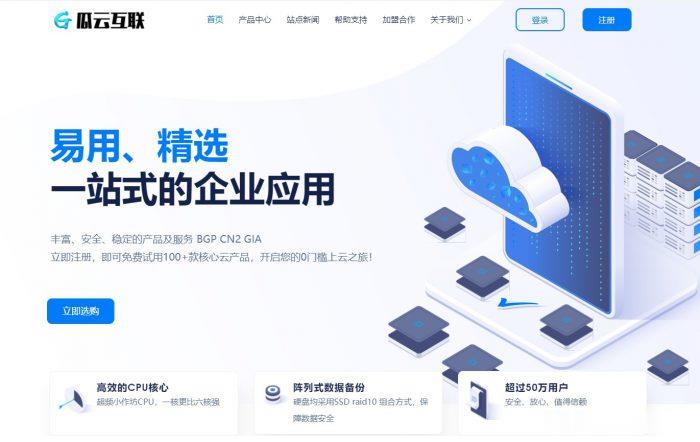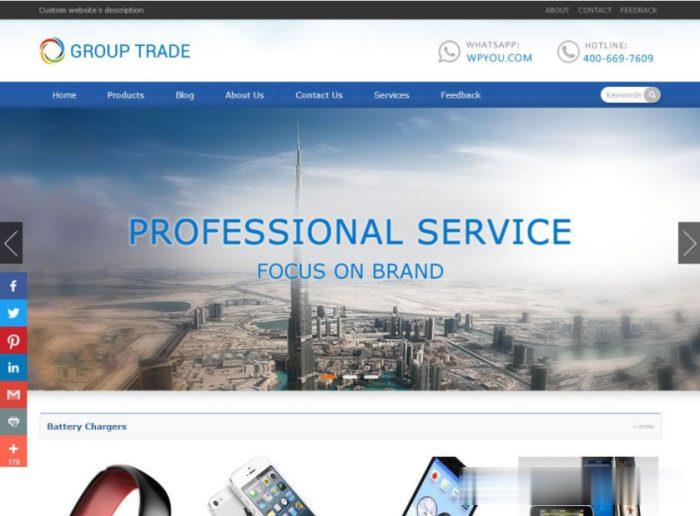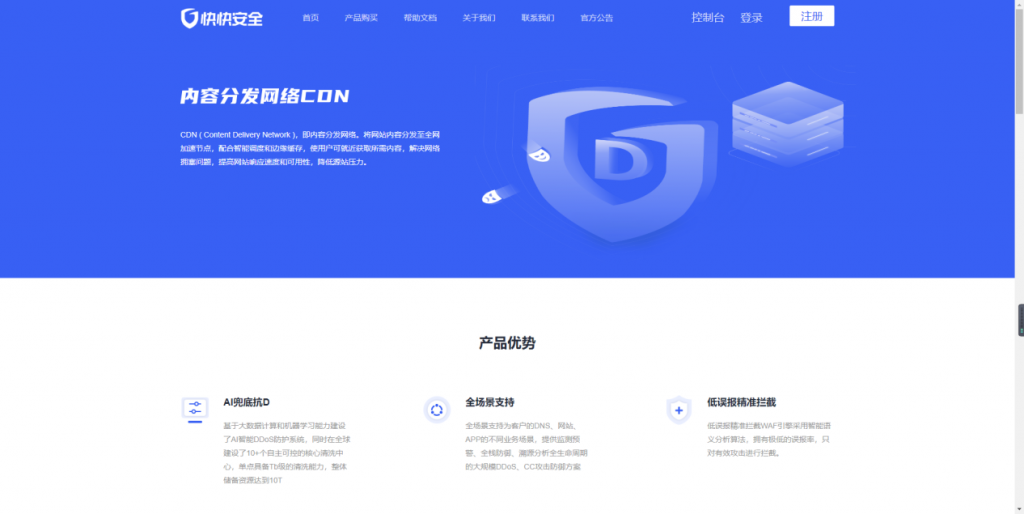PCTechnological Trends of Distance Learning From Web-Based to WAP-Based
Technological Trends of Distance Learning:
From Web-Based to WAP-Based
1
University ofNorthern British Columbia,Prince George,B.C.,CanadaAbstract:Web-Based learning is learning,which is delivered, in whole or part,using the WWW(World Wide Web)as the delivery medium.The WWW is a visualinterface for using the Internet -a vast,worldwide network of computer networks,which share information. Web-based learning is often referred to as those deliverymodalities that seek to reduce the barriers of time and space to learning, thus thefrequently used phrase "anytime, anywhere learning". On the other hand besidesWeb technology, new technologies such as WAP(Wireless Application Protocol)andGPRS (General Packet Radio Service) technologies ofer education institutionsadditional tools that allow students and instructors access to the Internet, anywhereand anytime, via the micro browser equipped mobile phone. The use of computingtechnology for education has been observed in various ways, but since the recentyears quick advance of mobile technologies a new term has appeared–WAP-basedlearning or sometimes called mobile learning. WAP-Based learning has beenconsidered as the future of learning or as an integral part of any other form ofeducational process in the future. As WAP-based learning is quite a new domainthere is a lot of work and research that is being going on. This paper we willintroduce what is the WAP technology. Later will explore the WAP-based learningreview. Then this paper will point out challenges and limitations in this field andfinally will cover discussion andfuture work in thisfield.
Keywords:Distance Learning,Web-Based Learning,WAP-Based Learning.
1.Intro ductio n
Nowadays the Web-Based Learning has become a common medium of education.Today many Virtual Universities and others are offering education using Web-Basedtools and techniques. It is why because traditional learning in classroom is notenough,because in classroom instruction, it is teacher rather than student centered,dominated by information derived from textbooks¬es, confined in space, timeand conceptual structure, involves little joint work in small groups and is notconcerned with solving problems identified by students [1].
1
Web-Based learning(or in other words “e-Learning") is learning,which is delivered,in whole or part,using the WWW(World Wide Web) as the delivery medium.TheWWW is a visual interface for using the Internet - a vast,worldwide network ofcomputer networks,which share information. The WWW allows not only thetransmission of information in text but other types such as graphics, video, audio,animation, etc.via the Internet from one computer to another.This ability allows forthe delivery of educational content using multiple methods (computer-based, video,text, audio)within one system. Web-based learning is often referred to as thosedelivery modalities that seek to reduce the barriers of time and space to learning, thusthe frequently used phrase "anytime,anywhere learning" [2] [3] [4].
On the other hand besides Web technology,new technologies such as WAP(WirelessApplication Protocol) and GPRS (General Packet Radio Service) technologies offereducation institutions additional tools that allow students and instructors access to theInternet,anywhere and anytime,via the micro browser equipped mob ile phone.The use of computing technology for education has been observed in various ways,but since the recent years quick advance of mobile technologies a new term hasappeared–WAP-based learning or sometimes called mobile learning.WAP-Basedlearning has been considered as the future of learning or as an integral part of anyother form of educational process in the future. As WAP-based learning is quite anew domain there is a lot of work and research that is being going on. People aretrying to understand how the mobile devices will help them in reaching bettereducation.
In this paper we will discuss what is the WAP technology. Later we will explore theWAP-based learning review. Then we will point out challenges and limitations inthis field and finally discussion and future work will be discussed.
2.WAP Technology
WAP is similar to HTML in that it lets a variety of devices and networks shareinformation. The WAP is an open,global specification that empowers users from allover the world and provides the facility to use digital mobile phones,pagers,personaldigital assistants (PDA) and other wireless devices to securely access and interactwith Internet / intranet / extranet content, applications and services.WAP offer aneasy-to-use highly portable communications and information tool. Devices usingWAP-Based micro-browsers can access an array of innovative,value-added servicesincluding Education, Enterprise Solutions, Entertainment, Financial Services,Location-S mart Services,M-Care,M-Commerce,Messaging,Personal InformationManagement,Travel Services and many more[5].
2
WAP creates new business opportunities for corporation by providing a new channelfor existing services and the possibility for totally new services that can reachcustomers in 24 hrs a day 7 days a week wherever they are.Since WAP is an openprotocol for wireless messaging, it provides the same technology to all vendorsregardless of the network system. This means that there will be WAP complaintterminals from several manufacturers. Also the server technology is open, sooperators and companies can select from a wide range of products. The commonstandard offers economies of scale, encouraging manufacturers, applicationdevelopers and content providers to invest in developing compatible products. Thereare several benefits ofWAP technology and can be reviewed in[6] [7].
3.WAP-Based Learning Review
The first and most obvious use ofWAP-enabled devices for educationalpurposes is adirect application o f the Web-Based learning techniques us ing smaller devices insteadof using desktop PC or laptop.Availability of course materials on Web site is normaland today many efforts have been already made to provide course materials on WAPenabled devices.Along-with availability of course material, further efforts have beentaken by UniWap project. This project team tries to explore the process of creating acomplete operating environment for studying and teaching through smart-phones andWAP enabled phones [8] [9]. An Ultralab M-Learning is an example of anotherproject in which, the team is producing m-learning materials for people with literacyand numeracy problems [10]. The following figure shows the WAP learning projectcarried out at Aj man Universi.
3
The most important project in providing course materials for range of mobile devicesis“From E-learning to M-learning”,which is a long time project that aims to create alearning environment for wireless technologies [11]. Also at Stanford Learning laban exploration of mobile learning has been done by developing prototype thatintegrate practicing new words, taking quizzes, accessing word and phrasetranslations etc [12].Other projects are being in pro gress for creating special learningcontent for PDA’s and WAP and also for developing special program like organizers,timetables etc. to assist learning with WAP-enabled devices.
Another most prominent application of the usage of mobile devices is messaging.Onebox.com (www.onebox.com) and uReach.com (www.ureach.com) offeruniversal messaging systems that let people access e-mail, voice mail, faxes, andcalendar and contact info on WAP-enabled devices. At present, Unimobile(www.unimob ile.com) is beta-testing Unimob ile for WAP,which inc ludes the ab ilityto send messages to any mobile device,and will provide calendar and alert services
[7]. At Kingston University UK, an experiment was undertaken to research theeffectiveness of two-way SMS service in the University environment [13]. Also atthe University of Helsinki the LIVE (Learning In Virtual Environment) projectcarried out with SMS system and with WAP enabled phones. Another porject onevaluation of a Short Messaging Systems (SMS) to support undergarduates studentswas done at Sheffield Hallam University[14].
Important example using this new technique is the “LSTN”project,which usesblended mobile technologies and explores how such projects necessitate newevaluation techniques. In this project the evaluation of student responses was takenusing SMS and WAP enabled devices [15].
“Ultralab M-Learning”is the project that has a special section dedicated on creatingof WAP portals for education purposes [10]. Few other examples WAP portals areHyWeb at Griffith University Gold Coast,mid-2000 at Minnesota State University,in Canada the NAIT m-learning project etc. [16] [17].
Tourism is an important application in WAP-Based learning domain. LAND(Location Activated Nomadic Discovery) is the sub-project of Ultralab project. Ituses the newest technologies as location-discovery via GPRS, radio frequency etc.
[10]. The Electronic Guidebook is another example, in which mobile web contentwas specifically created for the Exploratorium museum(an interactive sciencemuseum) in San Francisco. Also a little different experiment was made for amuseum in Japan,where an interactive guide system was created to familiarize thekids with exhibition and to attract users interest [18] [19].
4
WAP-Based E-Discussion Forum is also prominent area of using WAP enableddevices [20]. Another application in development is the ability to offer routingapplications over the mobile phone,known as WAP GIS [5].
These projects open two very important issues to be considered in doing furtherresearch in the WAP-Based learning domain. The first one is that the currenttechnology gives enough powerful instruments to support some new forms ofauxiliary learning tools. Second they also show the enthusiasm of the students toaccept such new technologies.
4.C hallenges&Limitatio ns
WAP-Based learning is becoming a new standard in distance learning and still it’srequired some improvements. Consider the limited size of the screen and capacity ofmobile phone a WAP-Based learning should not be more complex. Secondly amobile phone is not a computer, so making the operations too complex will upset allthe users if they have to press the buttons 10 to 15 times to get a particular result oran instruction. All the operation should be limited in a few steps, ideally,no morethen 3 to 5 steps,with an easy way of escape at every step. Thirdly typing somethingis not convenient in mobile phones, so INPUT tag should be avoided in the WMLpages, instead the SELECT tag can be used as an alternative [5].
Another important challenge is color images. A BitVisions has now started the firstphase of its journey to becoming the leading color wireless images. They hadintroduced the latest WAP imaging format in the form of Portable Network Graphics(PNG). PNG(pronounced “ping”) is a new bitmap format provides a portable,legally unencumbered, well-compressed, well-specified standard for loss-lessbitmapped image files. The PNG specification is now frozen,and has been approvedas a W3C recommendation by the World Wide Web Consortium[5].
As compared to Internet,wireless data networks tend to have less bandwidth,morelatency, less connection stability and less predictable availability. WAP enableddevices are different. Due to strong limitations of battery life and form factor,wireless devices tend to have less powerful CPU’s, less memory, restricted powerconsumption, smaller display and different input devices (e.g. a phone keypad etc.)
[5].
Security is also one of current challenge in this field. Currently the WAP standardprovides Wireless Transport Layer Security(WTLS),which is intended to providesome security, but according to experts WTLS is easily evaded. That is, if it isavailable. There are phones on the market that do not have WTLS available at all, sousers have no optionbut to transmit in the clear[5].
5
Despite the advantages of WAP, some industry leaders think that the technology istoo limited for full-scale wireless Internet access. Once people get used to theInternet experience, they want it without the limits of screen size, access speed, orplace of access. Imagine laptops,PDAs,handhelds,organizers, and Web pads,withtheir much richer user interfaces,always connected at high speeds to the Internet [7].Even so,WAP technology is improving.Today's wireless phone networks supportdata rates of between 9.6Kbps and 14Kbps,which is fine for transmitting a few linesof text,but little else.The WAP protocols are being upgraded for the next-generationwireless phone networks, called third generation or 3G,which will boast fasterthroughput rates and open standards.Wireless phone networks will operate at speedsfrom 384Kbps up to 2Mbps in a few years.With such high speeds,users will be ableto download large files from the Internet,use a phone as an MP3 player,and conductlive videoconferences right from their wireless phones. At that point,WAP phone smay replace landline phones entirely. [7]
5.Discussion&Future Work
WAP technology may be an ideal instructional approach for building a learningcommunity within technological enhanced educational settings in the near future.Butthe technical nature of this technology must be refined,modified and enhanced first.Additional qualitative and quantitative studies are also needed to substantiate theusefulness of WAP technology and to establish guidelines for integrating such toolinto o ur learning.
With the successful development of Bluetooth,WAP,GPRS and UMTS (UniversalMobile Telecommunications System), the technological structures for wirelesstelephony and wireless computing are now firmly in place. Future of WAP-Basedlearning is not gloomy, new efforts in this field are in progress. In the future theresolution ofWAP enabled devices should improve as well as the display size.
6.References
[1] David Hume,Guide to Web-Based Instruction,2001,www.moorb rook.demon.c o.uk/guide.html
[2] Higher Web,Web-Based Education,2004,www.highe rweb.co m/497/inde x.html
[3] Robert H.Jackson,An O verview o f Web-Based Learning,2004,www.knowledgeab ility.b iz/web learning/
6
[4] Karla Emb leton,Web-Bas ed Educ ation O verview,Educational Techno lo gyBrown Bag Series, 1999,www.fcs.ias tate.edu/co mp uter/tips/webo vervie w.html
[5] Tariq Rahim Soomro,Moneef Jazzar,Ghulam Qadir Mirbahar, and SyedMehmood Nqvi,WAP GIS:Approaches&Challenges,Asian Journal ofInformation Techno lo gy,Vo lume 4,Number 2,February 2005
[6] Thaneweb.com Education,Wireless Application Protocol(WAP),2002,www.thaneweb.com
[7] Dan Costa,Wireless Web Boom–Technology Information,2000,www.findarticles.com
[8] Sariola J.,Sampson J.P.,Vuorinen R.,Kynaslahti H.,Promoting mLearningby the UniWap Project Within Higher Education, Proc. of InternationalConference on Technology and Education (ICTE 2001),www.ic tc.org/T01_Library/T01_254.pd f
[9] Sariola J.,What are the limits of Academic Teaching? –In search of theopportunities o f Mob ile learning,2001,www.ok.helsinki.fi/pdf_tiedostot/mob ileEN.pdf
[10] Collett M.,Stead G.,Meeting the Challenge:Producing M-Learning Materialsfor Young Adults with Numeracy and Literacy Needs,Proc.o f the Europ eanWorkshop on Mobile and Contextual Learning,UK,2002.
[11] Desmond Keegan, The Future of learning: From eLearning to mLearning,2002,www.learning.erics son.net/mlearning2/project_one/book.html
[12] Mobile Learning Explorations at Stanford Learning Lab:A newsletter forStanford academic community, Speaking of Computers, Issue 55, 2001,www.acomp.stanford.edu/acpubs/SOC/Back_Issues/SOC55#3
[13] Stone A.,Briggs J.,How to Use SMS Effectively in M-Learning,Proc.of theEuropean Workshop on Mobile and Contextual Learning,UK,2002.
[14] Garner I., Francis J.,Wales K.,An Evaluation of the Implementation of aShort Messaging System(SMS) to Support Undergraduate Students,Proc.ofthe European Workshop on Mobile and Contextual Learning,UK,2002.
7
[15] John Traxler&Brendan Riordan,Evaluating the Effectiveness of RetentionStrategies Using SMS, WAP and WWW Student Support, 2004,www.learninglab.org.uk/researchcentre
[16] NAIT project,2004,www.nait.ab.ca/Mob ileLearning/
[17] Virtanen V., John S.,Wright K.,Nokia and Midwest Wireless EstablishModel Wireless Campus at Minnesota State University,Nokia Press release,2002,www.pres s.nokia.com/PR/200009/790728_5.html
[18] Vaxjo,The Electronic Guidebook:A study of User Experiences using MobileWeb content in a Museum Setting,Proc.of IEEE International Workshop onWireless and Mobile Technologies in Education,2002.
[19] Vaxjo, Towards an Interactive Museum Guide System with Sensing andWireless Network Technologies,Proc. of IEEE International Workshop onWireless and Mobile Technologies in Education,2002.
[20] Cher Ping, Lim and Chwee Beng, Lee, Exploring WAP Technologies:Mediating E-Discussions in Learning Communities, 2002,www.usq.edu.au/e lec tpub/e-j ist/docs/html2002/c her_frame.html
8
- PCTechnological Trends of Distance Learning From Web-Based to WAP-Based相关文档
- periodPERIODIC TABLE TRENDS - SCHOOLinSITES Web hosting …元素周期表的趋势schoolinsites网页寄存…
- 网页Mobile Web Design Trends and Best Practices
- higherPeriodic Trends Worksheet - Faculty Access for the Web
- WebWandererHow Is My Web Community Developing Monitoring Trends In Web…
- specificInventory- likely to be underestimated three interesting web design trends
- demonstrateGrowing Trends article - NYSTA Web Site
瓜云互联:全场9折优惠,香港CN2、洛杉矶GIA高防vps套餐,充值最高返300元
瓜云互联怎么样?瓜云互联之前商家使用的面板为WHMCS,目前商家已经正式更换到了魔方云的面板,瓜云互联商家主要提供中国香港和美国洛杉矶机房的套餐,香港采用CN2线路直连大陆,洛杉矶为高防vps套餐,三网回程CN2 GIA,提供超高的DDOS防御,瓜云互联商家承诺打死退款,目前商家提供了一个全场9折和充值的促销,有需要的朋友可以看看。点击进入:瓜云互联官方网站瓜云互联促销优惠:9折优惠码:联系在线客...

wordpress专业外贸建站主题 WordPress专业外贸企业网站搭建模版
WordPress专业外贸企业网站搭建模版,特色专业外贸企业风格 + 自适应网站开发设计 通用流行的外贸企业网站模块 + 更好的SEO搜索优化和收录 自定义多模块的产品展示功能 + 高效实用的后台自定义模块设置!采用标准的HTML5+CSS3语言开发,兼容当下的各种主流浏览器: IE 6+(以及类似360、遨游等基于IE内核的)、Firefox、Google Chrome、Safari、Opera...

无视CC攻击CDN ,DDOS打不死高防CDN,免备案CDN,月付58元起
快快CDN主营业务为海外服务器无须备案,高防CDN,防劫持CDN,香港服务器,美国服务器,加速CDN,是一家综合性的主机服务商。美国高防服务器,1800DDOS防御,单机1800G DDOS防御,大陆直链 cn2线路,线路友好。快快CDN全球安全防护平台是一款集 DDOS 清洗、CC 指纹识别、WAF 防护为一体的外加全球加速的超强安全加速网络,为您的各类型业务保驾护航加速前进!价格都非常给力,需...

-
p图软件哪个好用手机p图软件那个好聚酯纤维和棉哪个好聚酯纤维和棉 那个比较暖和啊麒麟990和骁龙865哪个好5G手机芯片高通865对比麒麟990 5G SOC哪个好?迈腾和帕萨特哪个好大众新帕萨特和迈腾哪个更好!核芯显卡与独立显卡哪个好英特尔核芯显卡怎么样?和独立显卡那个更好?播放器哪个好哪个播放器比较好用qq空间登录qq空间如何登陆51个人空间登录51个人空间怎么申请???辽宁联通营业厅辽宁移动网上营业厅进入办法东莞电信宽带东莞电信宽带资费问题。急!